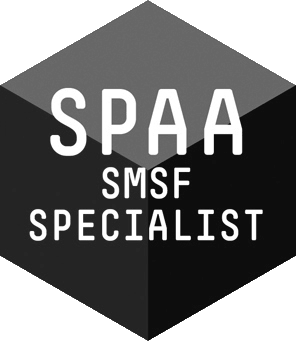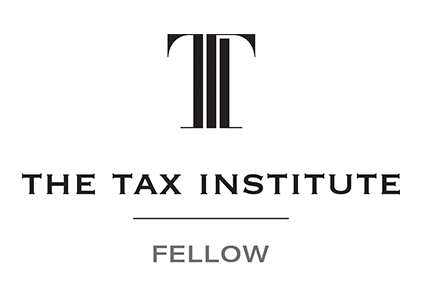
With many having received cash flow boost and JobKeeper payments, there can arise some unique issues where these amounts are received within a trust or company.
The cash flow boost and JobKeeper payment have been flowing to eligible businesses for some time now. These stimulus payments have differing tax treatments, which are:
- the cash flow boost is paid as a credit and is non-assessable non-exempt income, and also free from GST (because it does not represent consideration for a supply)
- the JobKeeper payment is paid directly into a recipient’s nominated bank account on completion of monthly reporting obligations. JobKeeper is assessable income, not subject to GST, and not included in activity statements.
Trust distributions
What constitutes trust income is determined by the trust deed or by the trustee where permitted under the trust deed.
It is a common misconception that the trust income available for distribution is equal to the taxable income of the trust. However, this will only be the case where the trust deed defines trust income to equal taxable income, or the trustee, where discretion permits, determines that to be the case.
Cashflow Boost
When considering payments received under the Cashflow Boost, if the trust deed or the trustee determine that non-assessable non-exempt income does not form part of trust income, the Cashflow Boost will not be distributable.
However, where such overt restrictions are not present, or where the trust deed or the trustee determine that non-assessable non-exempt income can be distributed, the Cashflow Boost may be available for distribution to the beneficiaries.
Where the Cashflow Boost is distributed to beneficiaries it will hold its character as non-assessable non-exempt income in the hands of the beneficiary.
JobKeeper
JobKeeper payments will form part of the taxable income of the trust and would be expected to also be trust income as may be defined by the trust deed or the trustee.
Where JobKeeper is received for eligible employees, the amount paid to the employees, and therefore the associated expense/deduction must be equal to or more than the amount JobKeeper payment. Therefore, no net trust or taxable income would arise.
However, JobKeeper amounts received for eligible business participants do not need to be paid to the eligible business participant, as the wage condition does not apply. Therefore, the amounts could be retained within the trust and form part of the trust income distributed at year end.
Franking credits
As the Cashflow Boost amounts are non-assessable non-exempt income, no tax arises on these amounts and it follows that no franking credits will be generated by these amounts. Whether the boost amounts can be paid out as a franked dividend by the recipient company will depend on the balance in the franking account of the company involved and the amount of its accumulated profits.
Company beneficiaries
A key plank of the JobKeeper payment is that a minimum of $1,500 per fortnight amount must be paid to employees (which is then reimbursed to the employer at month-end).
However, where the recipient of an amount is an eligible business participant, there is no requirement for the amount to be paid to that individual. Instead, it can be retained in the company or trust as the case may be. Where a trust does retain the amount, it will then form part of the trust law income to be distributed by the trust to any beneficiary at year-end (see earlier).
Where a trust receives JobKeeper payments and distributes these amounts to a company beneficiary, this can have consequences as to whether that beneficiary then qualifies as a base rate entity for the purposes of qualifying for the lower company tax rate. To recap, to qualify as a base rate entity, a company must not only have an aggregated turnover of less than $50 million, but no more than 80% of its assessable income can be base rate entity passive income. This income consists of the following:
- corporate distributions and franking credits on these distributions
- royalties and rent
- interest income (though some exceptions apply)
- gains on qualifying shares
- net capital gains, and
- an amount included in the assessable income of a partner in a partnership or beneficiary of a trust, to the extent that it is traceable (directly or indirectly) to an amount that is base rate entity income under categories (a) to (e).
Trust distributions received by corporate beneficiaries need to be dissected into their base rate entity component, and their non-base rate entity component. In this case of cash flow boost, it would not count as assessable income in any case and therefore would be disregarded for the purposes of the 80% test. On the other hand, JobKeeper is assessable income, but not passive income for the purposes of the 80% test.
Therefore, the JobKeeper component of trust distributions to a company will improve the chances of the company meeting the 80% test (because it will be assessable income, and not base rate entity passive income). It will therefore qualify the company as a base rate entity for the purposes of accessing the lower 27.5% corporate tax rate (decreasing to 26% from 2020-21).
JobKeeper amendments
There have been some changes made to JobKeeper since our last newsletter. Businesses will need to meet one of the decline in turnover tests for the September 2020 quarter alone (rather than for both the June and September quarters as announced in July) to be eligible for JobKeeper for the period 28 September 2020 to 3 January 2021. Beyond that, businesses will have to meet the decline in turnover tests for the December 2020 quarter to be eligible for JobKeeper for the period 4 January to 28 March 2021.
For the eligible employee test, the reference date for assessing which employees are eligible for JobKeeper is now 1 July 2020 (previously 1 March) with effect from fortnight 10 (3 August 2020). The reference period for employees regarding their hours worked to determine their tier of payment will be the two fortnightly pay periods prior to 1 March 2020 or 1 July 2020. The period with the higher number of hours is to be used for employees who were eligible at 1 March 2020.
The ATO had already extended the wage condition deadline to 31 August for fortnights 10 and 11.
Businesses can claim previous year tax losses
If your business has made tax losses in years to the current one, but you haven't yet offset all those losses, you can still carry these forward and claim a deduction for them in a later year — as long as you meet all the requirements of the tax law.
Your business structure will affect how you can claim business tax losses from the current year or previous years. If you are:
- a sole trader or an individual partner in a partnership, you can generally offset your current or prior year business losses against other income in the same income year (subject to the non-commercial business loss rules that may prevent you from doing so);
- operating your business through a trust, losses must be carried forward by the trust indefinitely until they are offset against future trust income (they cannot be distributed to beneficiaries) – and, furthermore, there are strict requirements that must be met for the trust to be able to use the losses itself;
- operating through a company, you must meet fairly onerous “continuity of ownership” tests or the “same business” test in order to be able to claim current and/or prior year losses.
It is important to be aware that the ATO expects taxpayers to consider each tax loss separately if you are looking at more than one tax loss across multiple years.
If you carry forward a prior year business loss to the current year or a future year, make sure you have correctly applied your past business losses before lodging a tax return. Check that:
- you have accurately reconciled carried forward losses from a prior year to a later year (errors can occur when poor record keeping of losses accumulate)
- you haven't mis-characterised expenses such as capital expenditure and CGT losses as normal business expenses (because, for example, CGT losses can only be offset against CGT gains)
- if your business is a specific entity, such as a private company, that you have considered the relevant tests linked to same or similar business tests when applying prior year losses to a current year, where the business ownership or the nature of the business activity has sufficiently changed (as indicated above).
Remember, we are here to help if you have any questions or need clarification about claiming business losses.
Tax Store Accountants Fountain Gate.
Our Management Credentials




